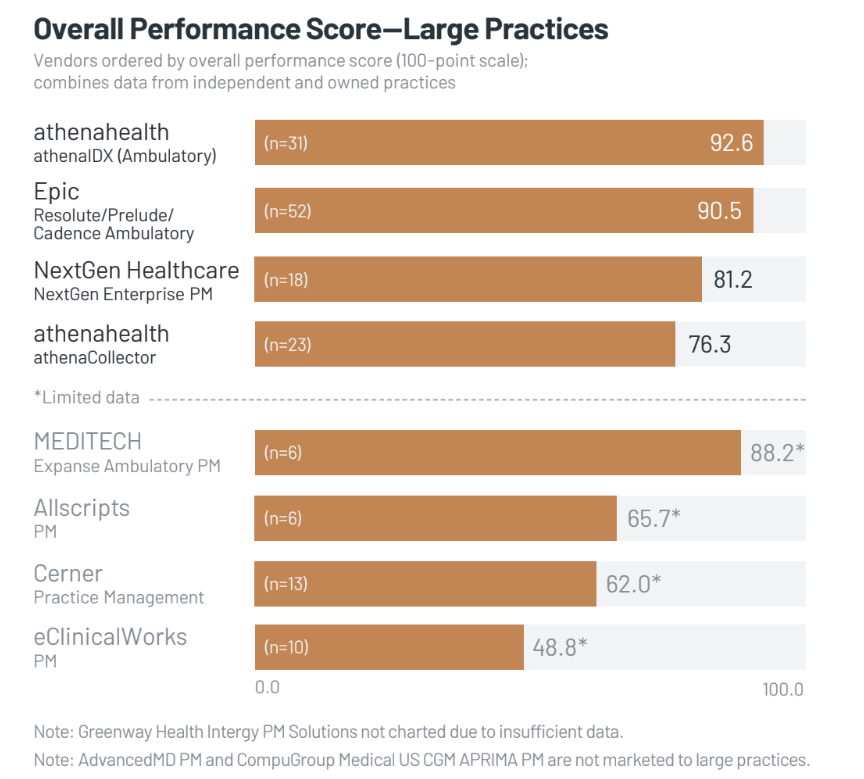halfway across the globe, make customizations and know exactly when it will be delivered. Navigating the portal of a healthcare system to find a physician who specializes in the care they need or make an appointment can be an ordeal in comparison. Clunky and confusing, they can frustrate patients, exacerbate worry, delay treatment and harm the reputation and business of a healthcare entity.
Traditional e-commerce giants from Amazon to Walmart have set a high bar for user experiences (UX) with sites that are simple to use and slick. Make no mistake, there’s great awareness in healthcare that the industry has catching up to do in this realm. Yet, when you consider digital upgrades and look under the technology hood, you can find an engine with crucial pieces that’ll be difficult to bypass or bring into the future. You’ll need to keep some of that, so you must prioritize where you can maximize impact.
Digital ecosystems in healthcare must be able to evolve and keep pace with consumer trends and corporate strategy. Yet, while organizations develop three, five or ten-year strategic corporate plans, most fail to incorporate a digital roadmap. This encompasses a system’s entire digital footprint — website, integrations, back office, intranet and more — enabling it to anticipate technological and operational changes and iterate accordingly. It’s as important as corporate strategy, and not only should these areas receive similar focus, they shouldn’t be siloed.
Untying the knot
It’s understandable why healthcare has been slower to advance on the digital front. Entities face a mix of legacy systems and inherent complexities that come with managing the patient experience. Upgrades are not like traditional e-commerce conversions because healthcare deals with very private information, requiring extensive security measures. Change involves a broader scope of work. This has made e-commerce vendors more amenable to efforts aimed solely at experimentation for the sake of innovation itself.
Even progressive organizations that have brought in various systems to handle parts of the patient journey – whether it be a portal or a better way to share data amongst providers – face serious challenges. Often, new solutions are layered upon existing resources, creating a Gordian knot of the underlying infrastructure. You can bring in a slew of best-of-breed solutions, but you still have to get them to work with core platforms.
The key lies in delivering both an elevated experience for consumers and a nimble digital ecosystem that can be easily managed and built upon by your digital technology team. Though it might be too expensive, disruptive and impractical to do a full rip and replace, you can undertake updates with digital road mapping techniques that’ll align internal stakeholders, audiences and technology with your team’s capabilities, ultimately improving the consumer experience, enhancing loyalty and driving revenue.
Knowing your needs
It’s easy to get locked into extended discussions when something is complex and the issues are great. Road mapping takes into account your entire digital footprint and aligns it with corporate strategy to create a one- or multi-year plan that anticipates both technological and operational changes. It basically breaks down those large, costly problems into smaller, feasible, deliverable projects and initiatives.
Still, before mapping, you must first understand your needs. So, the first step is conducting a needs analysis to identify technology problems and root causes while defining the overall deficiencies that impede progress. What is your current landscape? What are the pain points with the platforms you have? Are there opportunities to consolidate technology? Should you bring in new tools to address particular patient needs? From this understanding, you can establish priorities and build out a roadmap showing what you’re going to accomplish and when.
It’s important to take time on the needed analysis to make sure you are internally in sync. On any day, you’re likely to get five different opinions about what needs to happen in the next quarter. So, this is about ensuring all stakeholders understand the priorities and agree on how to move forward. It really is a strategic exercise and their buy-in is what prevents second-guessing when you’re heading in a direction and well down the road. Because making a sharp turn could waste the million dollars you’ve already invested in the project.
Even so, you don’t build a roadmap once – change is inevitable. It is not uncommon to begin a project, see an opportunity, and something further down the line needs to be re-prioritized. A competing healthcare system could shift market focus and spur a critical pivot. A roadmap must evolve, even as you’re delivering it. In many ways, it’s akin to what has always been done with agile delivery – prioritize, prioritize, then prioritize again.
At the very least, road mapping is a means for all stakeholders – from the C-suite to technology teams to individual departments like marketing – to understand where a health system is heading. Change may come, but with everyone reading from the same page, an organization can confidently continue to move forward.
Drawing the map
A strategic digital roadmap should encompass and define many things. It should benchmark data and include key performance indicators to measure performance. It should set interval milestones for periods such as six months, a year, three years, etc. It should anticipate upgrades and known large-scale projects. And it should also take maintenance and opportunities for innovation into consideration.
When attempting to align digital and corporate strategies, remember what differentiates your health system. Not only should this be reflected in landing pages and sharp copy, but it should also carry throughout the entire UX on your website. Additionally, mergers and acquisitions can increase a healthcare system’s competitive edge, so your digital assets need to be built to scale. Particular attention should be paid to expanded location-based personalization, an intranet to serve additional personnel and robust telehealth tools.
Rules of the road
When creating a digital roadmap, we recommend utilizing the 70/20/10 rule. Here’s how that breaks down:
- Existing strategy — 70%: This amount of budget and effort should be applied to what has proven successful and will guarantee a return on investment. Aim it at such things as maintenance and upgrades to your existing platform, marketing automation, new or expanded content resources, A/B testing, action buttons on high-trafficked web pages, security upgrades and enhanced accessibility.
- Incremental strategy — 20%: This should address growth areas with strong potential to deliver returns, though these are not guaranteed. This should entail measures you want to test that could set your organization apart. Examples include chatbots, artificial intelligence, health personalization and interactive elements.
- Disruptive strategy — 10%: This should be reserved for particularly bold and untested ideas. An example would be something proprietary developed alongside a digital partner. Be sure to set aside this resource for daring ideas that could produce a major benefit.
Getting there
Creating a strong digital roadmap is no longer a “nice to have”, it’s critical to success and a sustainable web presence. With this in mind, you may want to bring in a firm focused on digital healthcare ecosystems to ensure each element — UX, design, technology, marketing — is covered in your strategy. They can also guide you in finding a digital experience platform (DXPs) with the right suite of tools for delivering, managing and optimizing the patient experience across channels.
Now is the time to evaluate your digital footprint alongside your system’s strategic goals. By taking the time to create a roadmap now, you’ll set your organization up for a more predictable, affordable and successful approach for taking patients and your health system where it wants to go.
About Michael Kinkaid
Michael Kinkaid is the Chief Technology Officer at Reason One Inc. He is passionate about creating excellent outcomes and experiences with digital solutions. He wears many hats in his day-to-day work at Reason One, from leading the studio’s technical direction, providing coaching and strategy on adopting agile practices and serving as the solution architecture guru.











